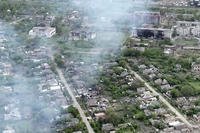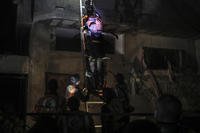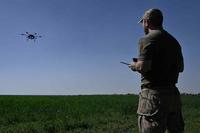
The Wall Street Journal (subscription required) reports that "U.S. intelligence officials are likely to seek a criminal investigation into disclosures about a top-secret and increasingly expensive spy-satellite program that several lawmakers have sought unsuccessfully to kill."
(PHOTO AT RIGHT: It's in there somewhere! STS-36 Launches with MISTY 1.)
The probe will focus on leaks that appeared in the Washington Post and New York Times. Rockefeller's office said his statement "was fully vetted and approved by security officials", but some Bush Administration officials also indicated that "discussions were under way about whether to ask Senate Republicans to consider removing Messrs. Rockefeller and Wyden from the committee."
The investigation would center on reports in "some other news stories [that] alleged that there are shortcomings in the program, such as that it is useful only in daylight and in good weather," the Journal reported. "Such details, while sketchy, suggest that people with knowledge of the program may have shared information on it." The allegation appears at the beginning of the New York Times story, which noted the satellite "still would take photographs only in daylight and in clear weather, current and former government officials say." That, to me, sounds like a government official with a high school physics education.
MISTY's secret is not the fundamental science behind the behavior of light but rather the stealth technology--some of which may have been made public when the geniuses over at SDIO filed a patent shortly after the first MISTY launched in 1990 on STS-36.
It's not like either MISTY was invisible. Amateur satellite observers tracked the first and second MISTY satellites. I blogged about this a couple of months ago after a couple of former SPACECOM officers mentioned a classified piece of the puzzle that would complicate plans to share satellite tracking data to reduce the risk of collisions.
Stealth, my ass.
--Jeffrey Lewis








